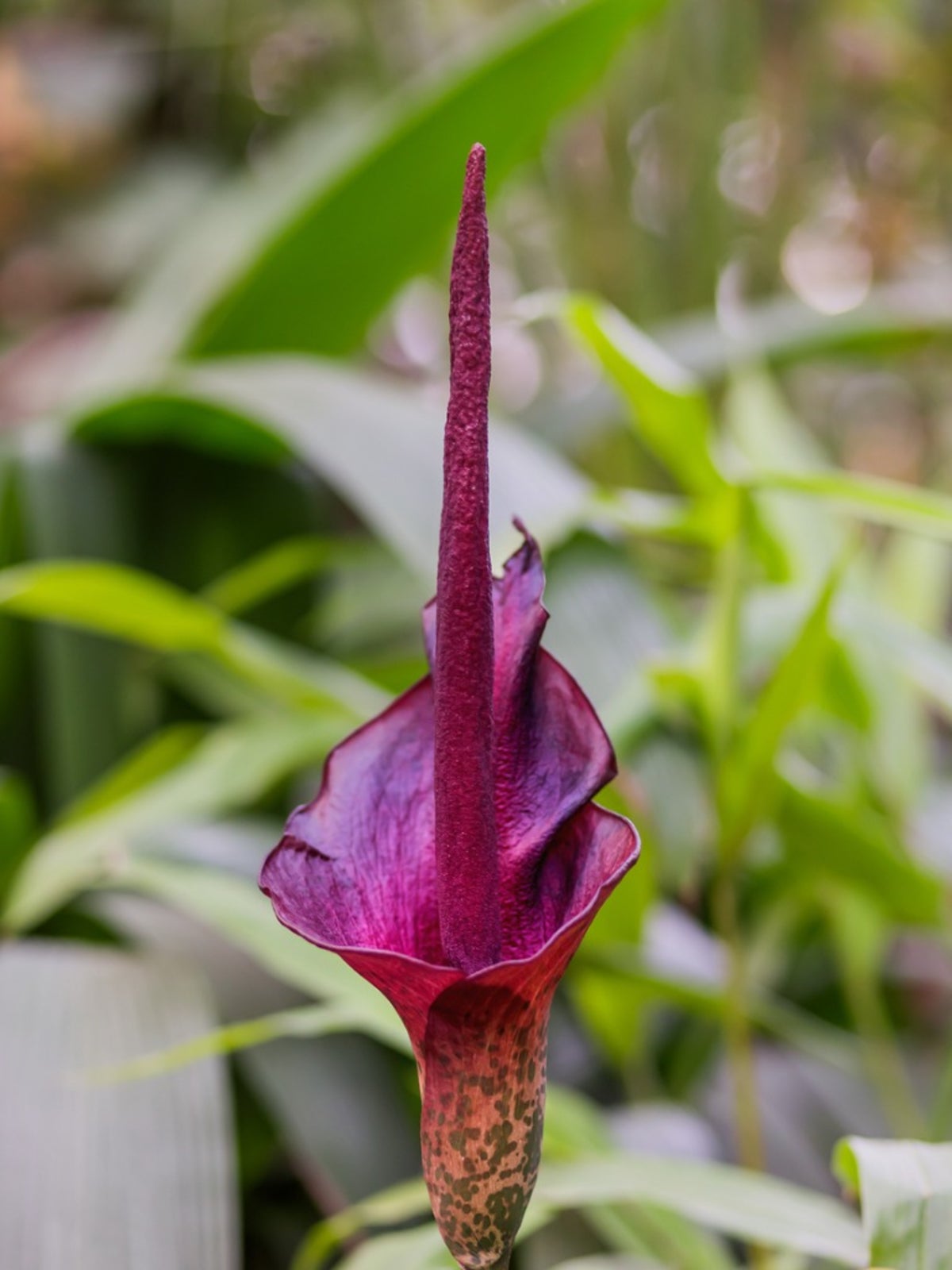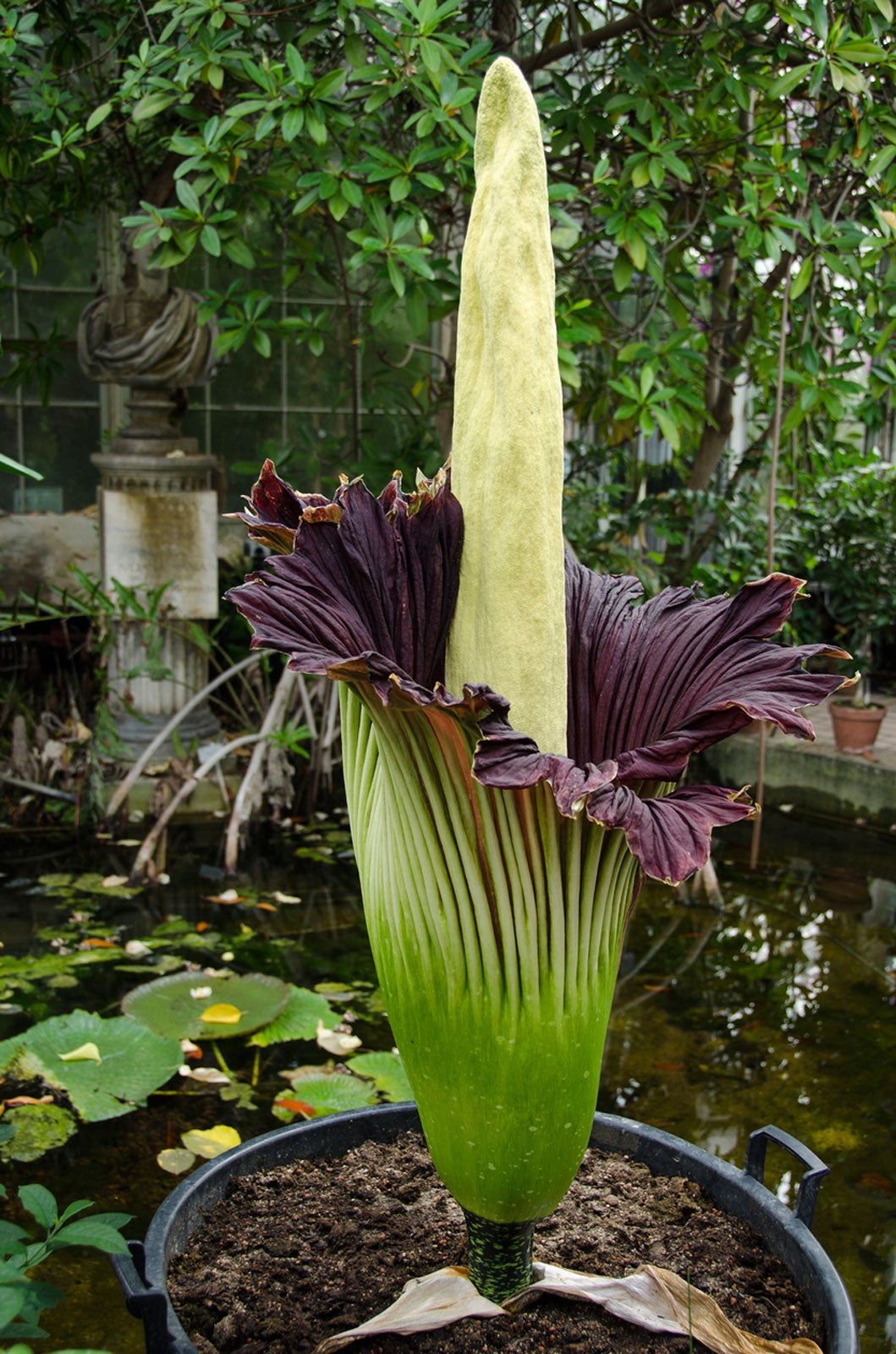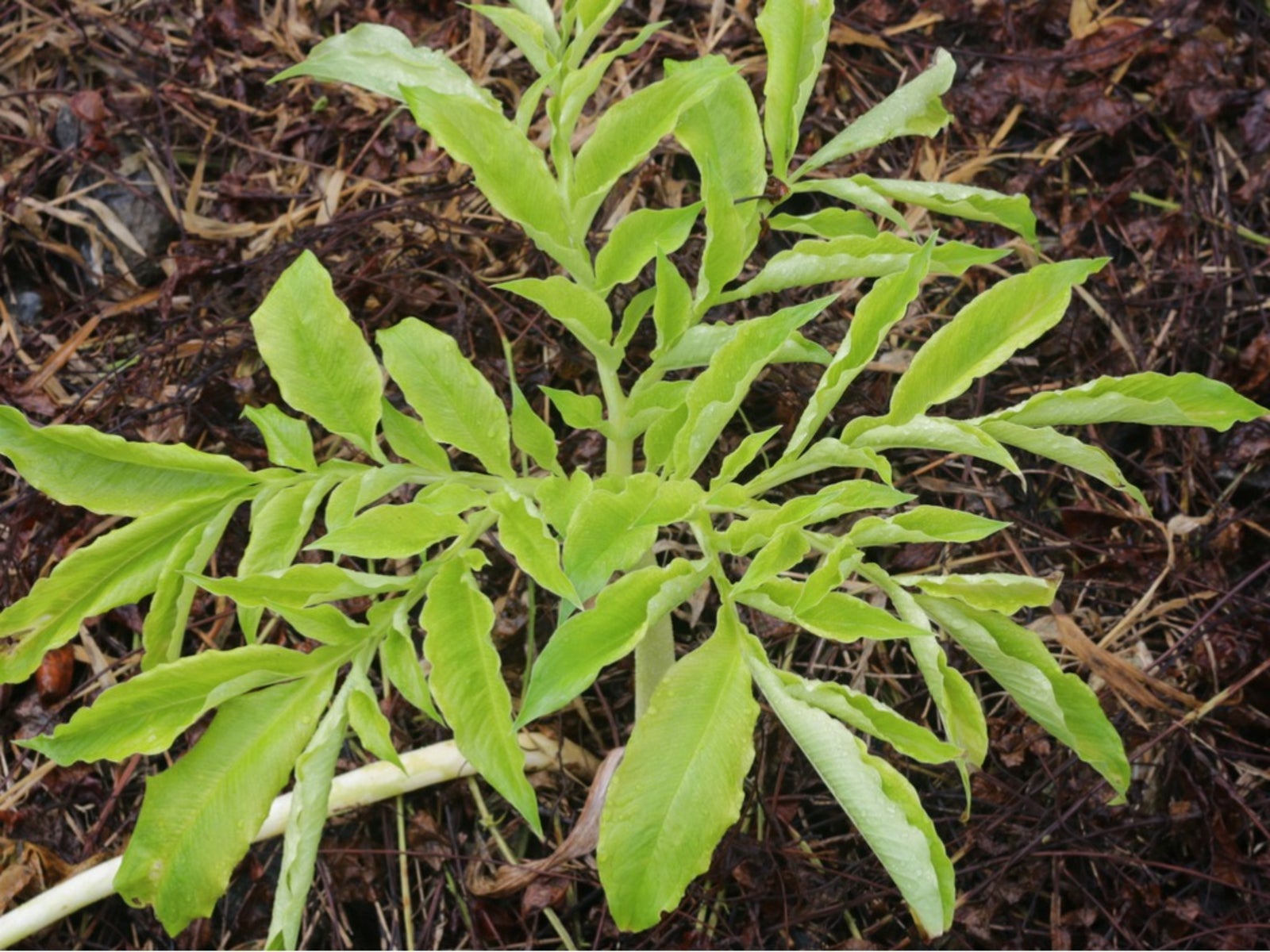Voodoo Lily Propagation : Tips For Propagating Voodoo Lily Plants


If you like bizarre and unusual plants, try a voodoo lily. The plant produces a rather smelly spathe with rich reddish-purple coloring and speckled stems. Voodoo lilies are tropical to sub-tropical plants that grow from tubers. Propagating voodoo lily couldn't be easier if you already have one or a gardening buddy has this member of the Arum family. Division is the best method of voodoo lily propagation and may even be done by beginner gardeners, but seeds are possible with a little know-how too.
How to Propagate a Voodoo Lily
You will know you are in the presence of a voodoo lily even before you see it if it is blooming. The flower gives off an unmistakable scent that is reminiscent of something that is rotting. This attracts pollinators, such as flies, and ensures that the plant can set seed. The odor is only strong for the first day and fades quickly. Soon seed will set and offsets will form. Either method is a suitable method of propagation for voodoo lilies, provided you have the knowledge and environment to grow either tubers or seed. Voodoo lilies are native to sub-tropical to tropical regions of eastern Asia. They have many other colorful common names, among them devil's tongue. The plant has an appealing umbrella shape and develops a maroon to reddish spathe, a modified leaf that houses the actual flower or spadix. This spathe appears up to a month before the first leaves, on a tall speckled stalk. The tubers, which are the source of the plant growth, may be the size of a grapefruit. Small berries form after the spathe fades and wilts. These are said to be poisonous but can also be used to start new plants. Allow these berries to dry naturally on the plant and then harvest them. Use gloves, as all parts of the plant can cause contact dermatitis. Break open berries and separate seeds from the pulp. Use seed immediately, as it does not store well.
Propagating Voodoo Lily Tubers
The fastest way of propagation for voodoo lilies is from the large tubers. After the flower fades and the rest of the plant goes dormant, dig up the tubers. There are usually several offsets which should be divided. Each tuber should have some root structure and be firm and blemish free. Use a well-draining potting soil with plenty of compost content. Plant tubers 3 to 4 inches (8 to 10 cm.) deep. The container needs to be at least 4 inches (10 cm.) wider than the tuber and 12 to 16 inches (30 to 41 cm.) deep to accommodate the roots. The best time to install tubers is early spring, but you can start them indoors earlier. Water to ensure soil is evenly moist and then let soil dry out before watering again. Place the container in a moderately shady location. When growth appears, keep soil lightly moist.
Care during Voodoo Lily Propagation
Both seeded plants and those started from tubers need to be kept in an area with moderate humidity. Placing containers near heating vents or drafty windows can limit germination and sprouting. Voodoo lily prefers low light conditions and can suffer in a southern window. The plants also need temperatures on the high side, at least 65 degrees Fahrenheit (18 C.). Fertilize plants once sprouts are evident with an all-purpose houseplant fertilizer diluted by half, once per month. A good ratio is a 15-30-15 formula. Suspend fertilizing as the plant begins to go dormant. Keep soil moist but not soggy. Plant started tubers or seeds outside once all danger of frost has passed. Amend soil so it is humus rich and drains well. Dig up tubers to store for winter in northern regions. This smelly little guy is fun to grow and a real conversation piece as an indoor or outdoor plant.
Gardening tips, videos, info and more delivered right to your inbox!
Sign up for the Gardening Know How newsletter today and receive a free copy of our e-book "How to Grow Delicious Tomatoes".

Bonnie Grant is a professional landscaper with a Certification in Urban Gardening. She has been gardening and writing for 15 years. A former professional chef, she has a passion for edible landscaping.
-
 Get Ready For A Summer Of Hummers! Grow These Full Sun Hummingbird Plants and Flowers
Get Ready For A Summer Of Hummers! Grow These Full Sun Hummingbird Plants and FlowersIf you’re lucky enough to enjoy a sunny backyard, make sure you are maxing out on your pollinator opportunities and grow these full sun hummingbird plants and flowers
By Tonya Barnett
-
 12 Lush Alternatives To A Lawn For Sustainable Spaces
12 Lush Alternatives To A Lawn For Sustainable SpacesAlternatives to a lawn are beautiful and also beneficial to your local ecosystem and its pollinators. Explore our top picks for plants to replace grass.
By Tonya Barnett
-
 Corpse Flower Facts – How To Grow A Corpse Flower Houseplant
Corpse Flower Facts – How To Grow A Corpse Flower HouseplantAmorphophallus titanum, more commonly known as corpse flower, is one of the most bizarre plants that you can grow indoors. It is certainly not a plant for beginners, but definitely is one of the biggest oddities of the plant world. Click this article for more info.
By Raffaele Di Lallo
-
 Caring For Voodoo Lilies: Growing A Peony-Leaf Voodoo Lily Plant
Caring For Voodoo Lilies: Growing A Peony-Leaf Voodoo Lily PlantVoodoo lilies are perhaps best known for the unique scent of their blooms, which is described as smelling like rotting flesh. Learn more about growing a peony-leaf voodoo lily in this article. Click here for additional information.
By Darcy Larum
-
 Voodoo Lily Info: Information On How To Plant A Voodoo Lily Bulb
Voodoo Lily Info: Information On How To Plant A Voodoo Lily BulbVoodoo lily plants are grown for the gigantic size of the flowers and for the unusual foliage. The flowers produce a strong, offensive odor similar to that or rotting meat. Learn more in this article.
By Jackie Carroll